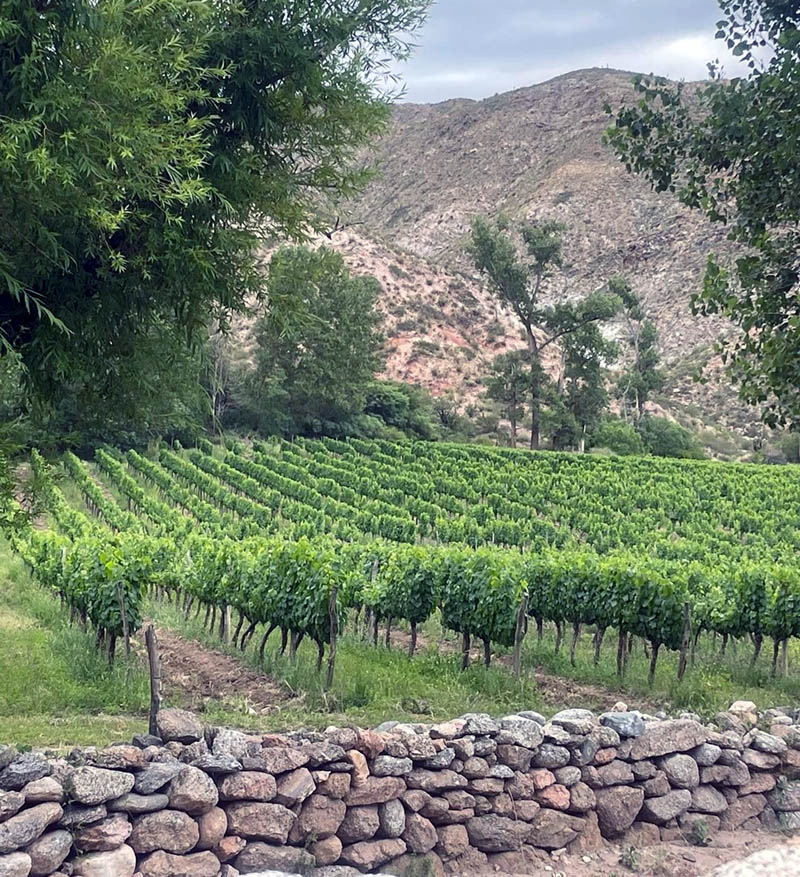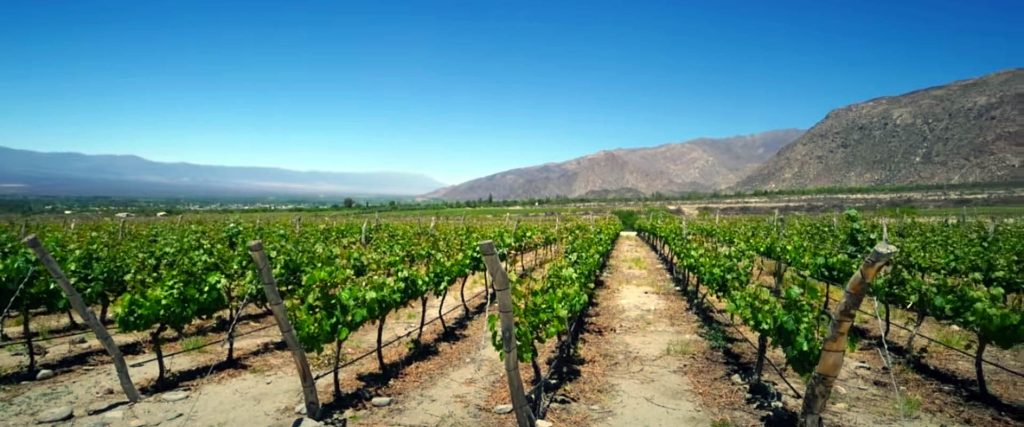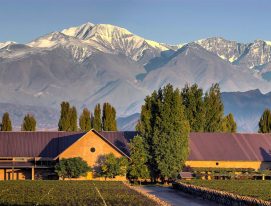Hi, wine lovers! How ya doing? I’m still learning. On my trip to the northwest of Argentina I didn’t just fall in love with the Calchaquí Valleys and the Quebrada de Humahuaca: I also tried some of the best empanadas in the country, visited amazing landscapes and discovered a lot of wines made by small wineries in Salta.
After realizing that the weight of my luggage was going to be a problem – I bought a poncho and some other crafts – I was invited to a tasting by some of the sommeliers I’d met in Cafayate: even though I couldn’t fit any more bottles into my suitcases, I could at least try a bunch of wines by small wineries in Salta.
I was joined by Helena and Lars, a Danish couple who, like me, are on a wine tour of Argentina, hoping to learn more about the country’s wines, so we met at Bad Brothers, a wine bar close to the square in Cafayate, where we opened a few bottles produced by small wineries in Salta and across the region, accompanied of course by artisanal cheeses and Salteña empanadas.
Today, these kind of viticultural enterprises are becoming very popular in the Calchaquí Valleys, thanks to their sterling work restoring vineyards in unusual locations.

Agustín Lanús, who founded the wine bar and already knew my Danish friends, came along. He also happens to be one of the most prominent young winemakers in the Calchaquí Valleys.
“Here there’s a fascinating heritage of excellent quality small batch winemaking. The role of family winemakers has always been important; in addition to selling grapes to larger wineries, they also bottle their own. Today, younger generations are helping these wines to make a name for themselves outside of the valleys.”
Which do you recommend? I blurted out. He told me to get some pen and paper.
Small wineries in Salta: a whole new world to enjoy
Sunal. Let’s start with the house wines: Sunal is Agustín’s surname written backwards. Lanús makes wines with grapes grown in inhospitable, neglected vineyards such as his Criolla, which was grown at a height of 8850 feet near the town of Luracatao. With us, he shared a Malbec, Sumak Kawsay, made with grapes grown by an indigenous community in Amaicha del Valle.
Charata. Mariana Páez is a Mendozan oenologist who came to Cafayate to run one of the largest wineries in the valley and, as often happens, she fell in love with the region and settled here definitively. Today, she makes her wines in limited editions with grapes from small vineyards and bottles them under the Charata label (named after a local bird). Her Torrontés is one of the most flavorful and aromatic that I’ve tried to date.

Valle Arriba. Yeyé Dávalos is responsible for the wines at Bodega Tacuil, one of the most legendary vineyards in the Calchaquí Valley, and he also produces wines under the Valle Arriba label, a collection of grapes from small, high-altitude vineyards. Employing simple winemaking methods, the results are very original and pure, including La Matriarca, a Pinot Noir grown at a height of 8200 feet, and El Seclanteño, a Tannat made at 7200 feet above sea level.
Mugrón. The wines from this enterprise are made by Francisco Puga, Mariano Quiroga Adamo, Claudio Maza and Rafael Domingo, famous local wine makers who work at different wineries but teamed up for this project.
A mugrón is a vine cutting made to preserve the mother plant’s genetic heritage. They chose the name to reflect the fact that they’re all transfers from other regions.
The first wine we uncorked was a red blend of Malbec, Tannat, Cabernet Sauvignon and Petit Verdot very typical for the region and we then moved on to Mugrón Negro, a lovely old vine Malbec.
Tinquiao. Tania Höy is an oenologist whose family has been involved in high altitude oenology for years, specializing in sparkling wines. But although she’s an expert in bubbles, she also makes excellent still wines under the Tinquiao label. Of these, the Cabernet Franc was the one we liked best together with an extremely fragrant Sauvignon Blanc.
Vallisto. Lavaque is one of the most prestigious names on the Salta wine scene and Francisco “Pancho” Lavaque is in charge of keeping the family legacy alive with his boutique project.
He started a few years ago restoring old Criolla, Barbera, Tannat and Torrontés vines and later he teamed up with the Mendoza winemaker Matías Michelini to create a line known as Inculto, which we tried.

It’s a selection of wines made with grapes from different valleys, such as the Criolla from the Quebrada de Hualfin, which is in Catamarca at a height of 6500 feet, and El Abrazo from Cafayate, which has a very refined expression.
Sierra Lima Alfa. One of the newest of the small wineries in Salta, we learned that Sierra Lima Alfa is run by Francisco Morelli, who’s a member of the Dávalos family. The project was named for the aeronautical code for Salta airport and right now is producing a white blend of Sauvignon Blanc and Torrontés, and a bold, modern Malbec. Both wines use grapes from vineyards above 6500 feet above sea level.
Get all that? Great! These small wineries in Salta are real finds to remember. Until next time, cheers!




Pingback: 4 Wineries In San Rafael, Mendoza